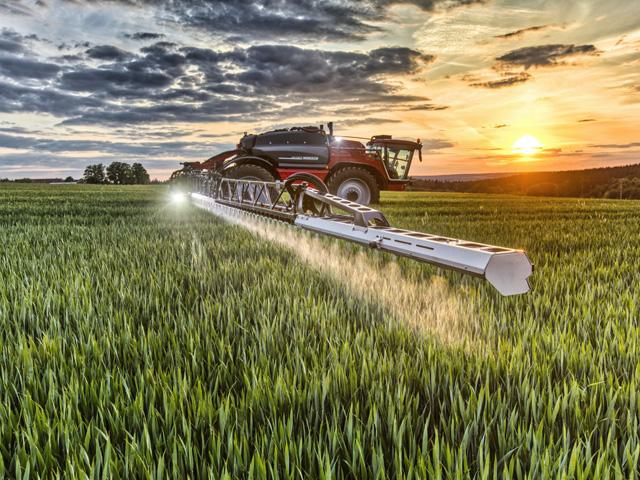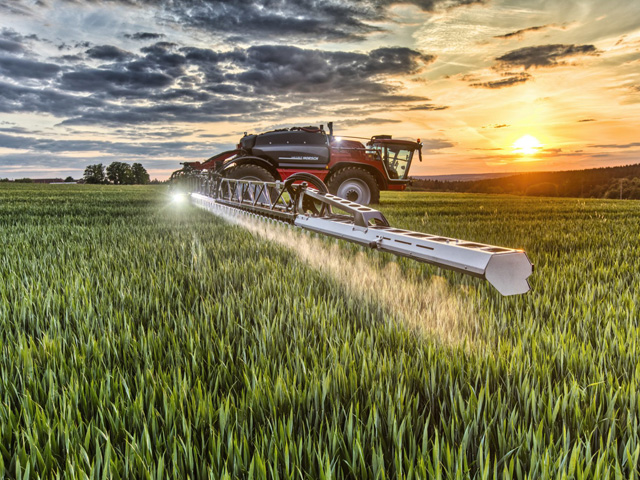MachineryLink
Trimble Discusses Collaboration With HORSCH, Plans for Field Autonomy
Trimble and HORSCH announced a new collaboration earlier in the spring. The work focuses on developing solutions that enable autonomy in agriculture. The ultimate goal is to build autonomous machines and workflows that allow farmers to be more accurate in their work.
To this collaboration, Trimble brings expertise in guidance systems, path planning and in-field process automation.
DTN/Progressive Farmer talked with two Trimble executives about the collaboration with HORSCH and about the autonomous strategies coming to the field. They are Finlay Wood, Trimble's business area director for autonomous solutions, and Guillermo Perez-Iturbe, Trimble's marketing director, agriculture.
**
Questions and answers with Wood and Perez-Iturbe:
DTN/PF: Trimble has formed a collaboration with HORSCH focused on building autonomous technologies and workflows. What's the primary goal?
Wood: There are so many decisions our customers make every day, and each are areas where they could make errors. So, the technologies we want to bring to market are to simplify the day, to allow them to do the job well. Think about how many times a farm manager gets a text message or a call over the radio because of a logistics problem or a prescription file for a field is missing. Those are the kinds of (fixes) we are looking to bring to market with this first phase. As we move further out with HORSCH, we do want to take the operator out of the cab, eventually.
Perez-Iturbe: We are looking at more automations, in general. Communications between vehicles. That's one of the building blocks you want.
P[L1] D[0x0] M[300x250] OOP[F] ADUNIT[] T[]
DTN/PF: Is the goal to remove the operator from the field?
Wood: Our goal is to make more time available to the farm operator and manager, to free them up for other tasks. There are a multitude of operations the operator can do while sitting in the cab. Our newest generation of connected displays bring additional functionalities to the cab, from using the latest Trimble PrecisionIQ Display platform to control planters, spreaders, sprayers or other implements, to being able to receive remote support via TeamViewer.
Perez-Iturbe: That (Android) display with GPS and guidance are the platforms that enable certain levels of control over other functions, such as the spreader and sprayer. If you are looking at workflow in the cab, we are creating a more relaxed ecosystem for the operator, so he can focus on monitoring the systems that show important operations of the machine. The operator can see warnings or identify where there is a need to get involved.
Wood: There are certain periods of time in the field where everything happens at once. When the operator comes to an end of the row, they have to slow the vehicle down, change what's happening with the sprayer, turn the vehicle and get on to the next row -- all those things happen in a cramped period of time. Even within that period of time, the operator has to keep his eye on what else is happening around the vehicle. This is what improving the customer experience and improving safety of the operation means.
When working with planters, for example, the same system that is guiding the tractor can also control seed delivery on a planter; it can be as simple as changing the delivery speed as the machine slows down or speeds up based on ground conditions yet following a specific prescription for seed placement.
DTN/PF: What stands in the way of removing the operator from the cab?
Wood: We imagine over time that we might move them outside the cab (to) monitoring the spraying operation and be the logistics driver. We believe the future of autonomy can include one operator carrying out multiple tasks. For example, the sprayer operator would become a supervisor overlooking the spray operation while also monitoring the resupply of chemicals, or potentially monitoring multiple vehicles in the field.
DTN/PF: What technology does not exist today that you will need to make that happen?
Wood: When I look at specific technologies that will be required, there are significant (hurdles). The operator uses all his senses. He's listening to the vehicle, watching what's happening around the vehicle. And all of that combined creates critical aspects that technology will have to solve before we remove the operator from the cab.
DTN/PF: What does workflow automation mean?
Wood: Workflow automation starts when the farmer is planning the next crop year. What does he want to do for the upcoming crop year? What's the optimum way to farm his land? What are the right vehicles to have in your fleet? There are logistics. The logistics of a spraying operation can become pretty complex -- getting the right vehicle to the right place, making sure it doesn't run out of product halfway through the field. It's planning, it's drawing the prescription map and there is the reporting cycle. Those are all places where we can help the farmer be more efficient.
DTN/PF: What autonomous technologies are coming to the field -- something you envision in the near future?
Perez-Iturbe: Spraying is complex work. You already have auto-steering for tractors, sprayers and combines. Controlling speed could be the next one. Our goal is to make all machines work together -- tractor, sprayer, combine, cart -- in a single connected environment with data compatibility.
DTN/PF: Bottom line, what does the work Trimble is doing bring to the farm in terms of efficiency of work, flexibility in operations and improved return?
Wood: We are addressing the farmers' pain points such as getting fuel to operators, making sure they are in the right field, applying the right chemicals.
Perez-Iturbe: This is about making farming more sustainable. Technology is able to capture and record best practices and make them repeatable by all operators. We want to create a safe environment in the most economical way.
Dan Miller can be reached at dan.miller@dtn.com
Follow him on Twitter @DMillerPF
(c) Copyright 2021 DTN, LLC. All rights reserved.






Comments
To comment, please Log In or Join our Community .